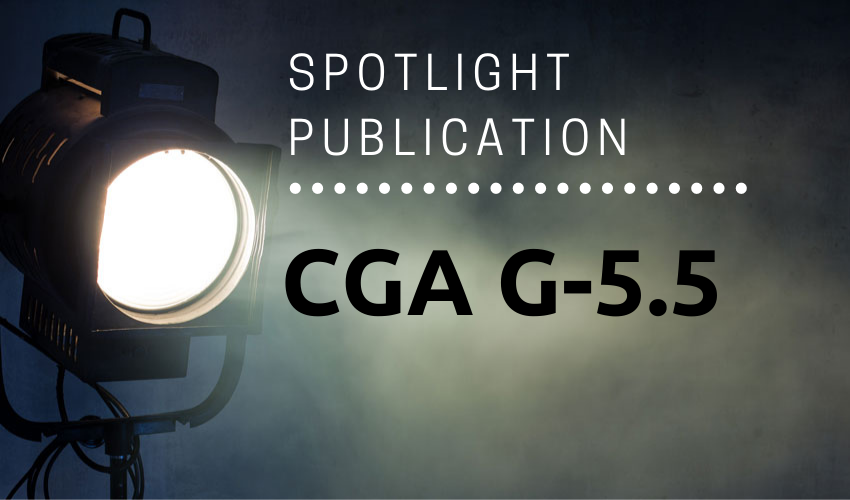CGA’s G-5.5 Publication Provides Methods for Safe Venting of Hydrogen
May 5, 2021
Gaseous and liquid hydrogen supply systems release hydrogen to the atmosphere as part of manual and automatic venting for system pressure control. CGA G-5.5, Standard for Hydrogen Vent Systems, provides the minimum requirements for the safe design, installation, and operation of such systems.
In April 2021, the Compressed Gas Association (CGA) issued the 4th edition of CGA G-5.5. This safety standard is referenced in the National Fire Protection Association’s NFPA 55, Compressed Gases and Cryogenic Fluids Code and NFPA 2, Hydrogen Technologies Code.
The Need for Hydrogen Vent Systems
Hydrogen has a wide flammability range between 4 and 75% hydrogen in air and a very low ignition energy. For these reasons, any release of hydrogen to the atmosphere may ignite. Discharges of gaseous hydrogen must be released to the atmosphere through an engineered vent system at a sufficient height so that the radiant heat will not harm people or property. The gaseous hydrogen is discharged into the air at the exit of the vent system. The discharge may be controlled either manually or automatically by devices on the supply system.
Typical hydrogen discharge devices include:
- purging of piping or components
- manual vent valves
- pressure control devices such as back pressure regulators or control valves
- pressure relief device (PRD) activation
What’s Covered in Safety Standard CGA G-5.5
This publication covers the design, fabrication, installation, and operation of vent systems.
The design of vent systems includes:
- Hydrogen properties and how they impact vent stack design and operation (note: more detailed coverage of hydrogen properties can be found in CGA G-5, Hydrogen)
- Sizing methodology, including how to determine reaction forces from vent discharges
- Special requirements for designing vent stacks for cryogenic storage tanks
- How to design vent stacks to maintain mechanical integrity in a hydrogen deflagration or detonation
The fabrication and installation of vent systems includes:
- Methods to drain water from stacks and avoid creating an ice blockage
- Examples of preferred methods of connecting vent lines to stacks as well as configurations to avoid
- Examples of preferred and non-preferred vent stack rain covers
- How to ground a hydrogen vent stack and piping connected to the stack to avoid problems from lightning and static electricity
The operation of hydrogen vent systems includes:
- How to deal with thermal radiation from vent stack ignitions
- Where to locate vent stacks in terms of equipment and personnel
- Best practices for operating, maintaining, and repairing a hydrogen vent stack, including the safe use of isolation valves on vent lines
What’s New in This Edition
The 4th edition of CGA G-5.5 incorporates a number of key updates, including:
- Clarification that hydrogen ignition should be expected and that a properly-designed vent stack provides protection from radiant heat for personnel and equipment
- Update to a standard to reflect its use in codes and standards such as NFPA 2 and NFPA 55
- More specific wording about dealing with vent stack fires and how to protect adjacent structures
- More detailed options for connecting multiple equipment to a single vent stack, including how to isolate equipment for maintenance
- A corrected formula for determining reaction forces from pressure relief devices and vent valves
- Additional options for venting liquid hydrogen and cold gaseous hydrogen
- Recommendations for optimal vent stack rain covers
The full Table of Contents may be downloaded for free from the CGA G-5.5 publication details page on the CGA portal.
Learn More About CGA’s Expanding Role in the Hydrogen Energy Revolution
Members of the Compressed Gas Association have long been global leaders in the production, storage, distribution, and application of hydrogen and other industrial gases.
In addition to our existing library of hydrogen standards, we are bringing our unique expertise in hydrogen to the development of new standards for emerging applications in the hydrogen-powered transportation space.
A complete list of CGA’s hydrogen-related safety standards, as well as details about our Hydrogen Initiative, may be viewed here.


